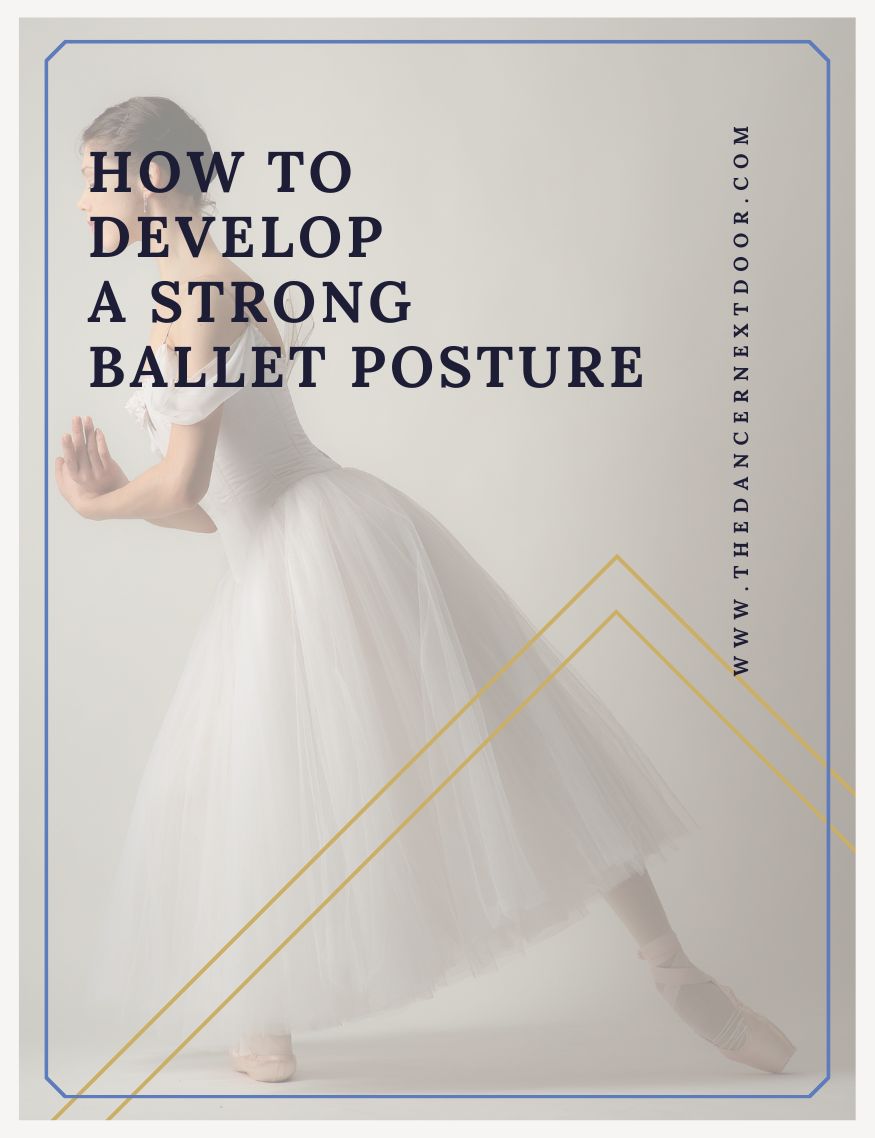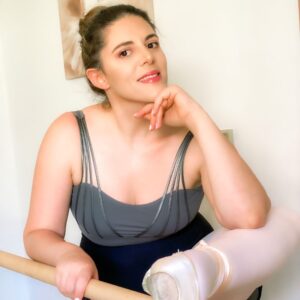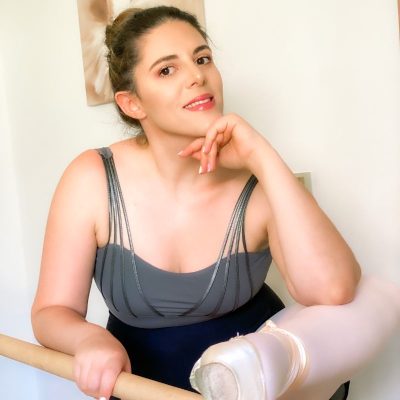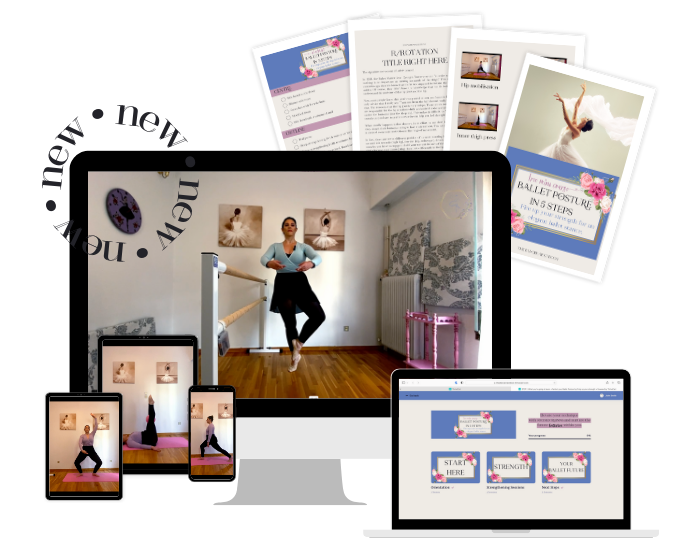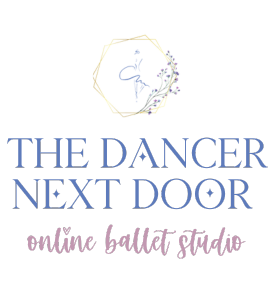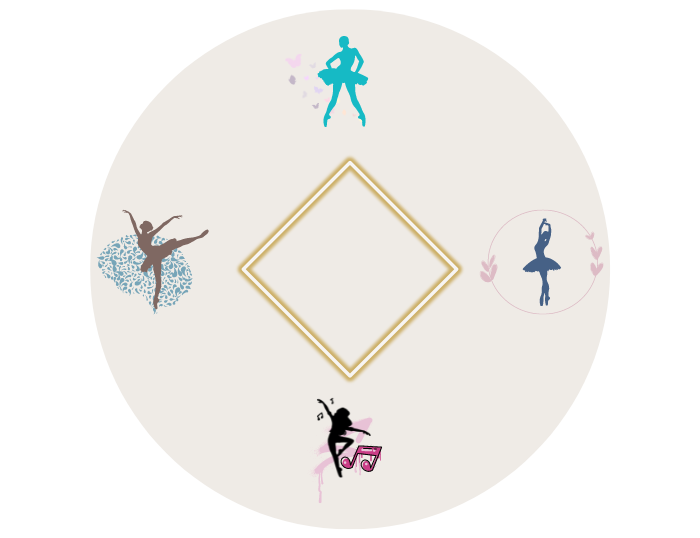People often say, ‘You can always spot a dancer by the way they walk, even if they’re not dancing.’ Ever pondered the reasons behind this unmistakable quality? Spoiler alert: It’s ballet posture! What sets a dancer’s posture and walk apart, giving it an almost magical and ethereal aura? If your first thought is, ‘Well, years of ballet must instil a certain posture,’ you’re on the right track. This posture conveys a captivating grace. But what exactly happens within the human body to achieve this? And more importantly, how can you achieve it? If you’re thinking of it as a secret superpower exclusive to elite dancers, I’ve got news for you! – you can enhance your posture and gradually embody that particular stance. The key lies in understanding what your muscles should be doing and how to train them effectively.
My first desire to analyse this began during the initiation week of my Masters’ degree in Dance. In those initial days, just before the official start of lessons, we gathered for an evening meet-and-greet to get to know our tutors and fellow students. This social event wasn’t exclusive to my program; it included students from various disciplines. So there was quite a crowd there, mostly non-dancers.
When our intimate group of twelve Masters’ in Dance, a fellow student approached me: “You know! I saw you earlier across the room and I knew you were in my program. I just sensed you’re a dancer. There’s a certain quality…” Beyond relishing the generous compliment I took that as, I found myself pondering the essence of that ‘certain quality.’
THE meCHANICS OF THE BoDY IN BaLLET TrAINING
Within this article, I’ll be your guide through the mechanics of the body in ballet training. But let me be clear, it’s not just about cultivating a ‘dancer’s posture’ for the sake of aesthetics. The significance of a strong ballet posture extends beyond mere elegance; it impacts the precision of your technique.
The more you refine your posture, the faster you can advance in the realm of ballet. Often, when people contemplate ballet posture, their immediate inclination is to ‘suck in’ their tummy.
However, the ballet posture isn’t about ‘sucking in’; it expands beyond the abdominal area. So, stay with me as we delve into the intricacies of how your muscles operate in your core, legs, and arms.
To support you further in this journey, I’ve created a mini course, dedicated to creating and maintaining a strong ballet posture, which you can get access to for free. Click here to join ‘Ballet Posture in 5 steps’. In this post, we’ll unravel the secrets behind the unique, proud, and lightweight stance that unmistakably characterises a ballet dancer.”
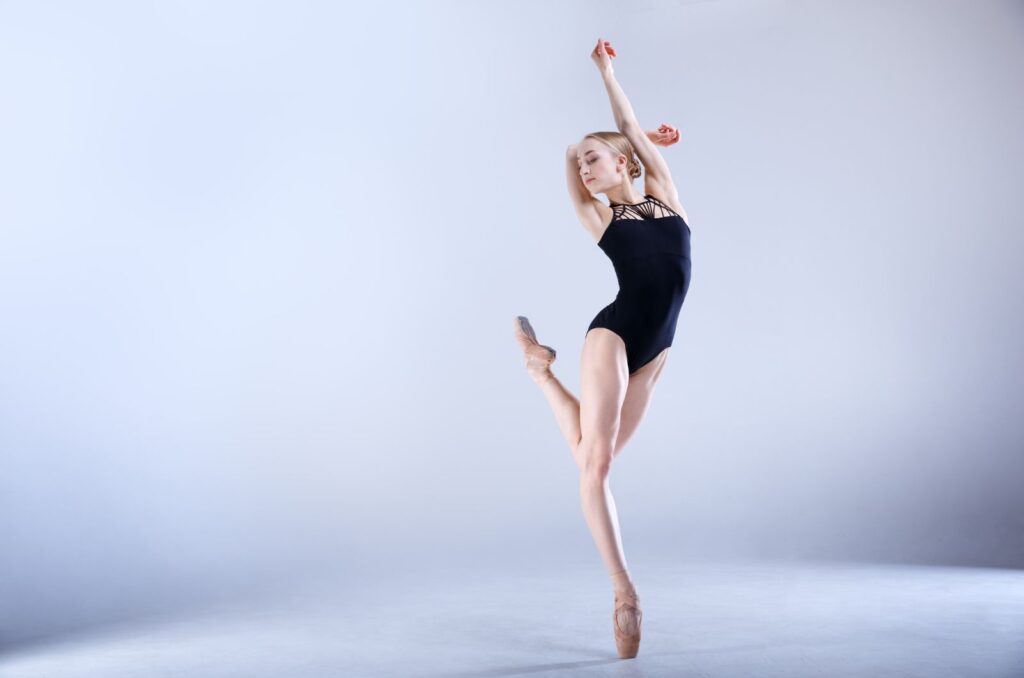
1. CORE muSCLES: THE HeART OF BALLET POSTURE
At the heart of ballet posture lies the centre, a focal point of paramount importance. Without a solid core, there’s no point talking about a good posture. Visualise the centre as the birthplace of all your movements.
The Significance of a Solid Centre:
As I mentioned earlier, the centre is often simplified to mere abdominal work, but its scope extends far beyond. A robust centre not only provides extreme postural awareness but also ensures spinal stability.
It’s not uncommon to encounter new ballet students with considerable strength yet struggling to maintain a graceful ballet posture. The reason lies in the fact that strength alone is insufficient. It’s not just about having strong muscles; it’s about retaining that strength while in motion—a whole different challenge.
Each time you straighten your spine for a jump or relevé, your centre muscles activate to safeguard your entire spine. A solid centre isn’t just crucial for technical finesse or a pleasing posture; it profoundly impacts overall health and well-being.
It acts as protection against the common injuries that plague dancers. Ballet’s sustainability doesn’t hinge on achieving a six-pack or performing countless sit-ups; it’s about activating all your core muscles to support you gracefully in any position.
Understanding Centre Muscles:
Let’s explore the intricate network of core muscles. To simplify, let’s categorise them based on their locations and functions.
Abdominal Wall:
The transversus abdominis, a horizontal muscle wrapping around the waist like a corsage, narrows the waist when activated. For instance, if your ribs protrude during a dance, it signals that this muscle isn’t engaged.
Obliques:
These side muscles of the centre consist of internal and external obliques. Internal obliques, located at the side of your trunk, induce a side bend when contracted, perfect for movements like a cambré. External obliques, situated next to your ribs, flex the back and help maintain tight ribs.
Pelvic Floor:
Essential for pelvic stability, these muscles at the base of your core connect to the ilium, ischium, and pubic bones. A stable pelvic floor is crucial for postural awareness and complements turnout strength.
Diaphragm and Breathing:
Incorporating the diaphragm and proper breathing into core strengthening is vital. Exhalation during movement creates internal pressure, fortifying your core. Remember, proper breathing enhances core strength and vice versa, which is necessary for good ballet posture.
Back Muscles:
The multifidus muscles, positioned along the sides of the spine, offer spinal support, especially during challenging movements like jumps. These muscles, along with erector muscles, form an interwoven soft tissue providing extensive spinal support.
How does all of this apply in practice?
A thorough understanding of your centre muscles is key to achieving and maintaining a strong ballet posture. It’s important to engage all the above muscles while you’re dancing, but also include some cross training in your routine.
Cross training doesn’t have to take up an awful lot of your time. Strengthening up your core even for 10’ to 15’ a couple of times a week can do wonders for your ballet posture and performance.
Strengthening exercises not only make you stronger, hence able to hold your posture even when executing intricate and challenging ballet movements, they also make you aware of how you’re supposed to use your muscles when dancing which alone can elevate your entire performance.
If you’d like to incorporate a 10min. Core workout into your training, but you’re not sure what exercises to do or where to start, I’ve got you covered. In my FREE mini course ‘Ballet Posture in 5 steps’, I have an entire workout dedicated to this. In this course, you’ll also find a video explaining all the above in more detail. Gain full access for free by clicking here.
This holistic approach ensures a comprehensive strengthening of your centre, contributing not only to technical prowess but also to the longevity and health of your ballet practice.
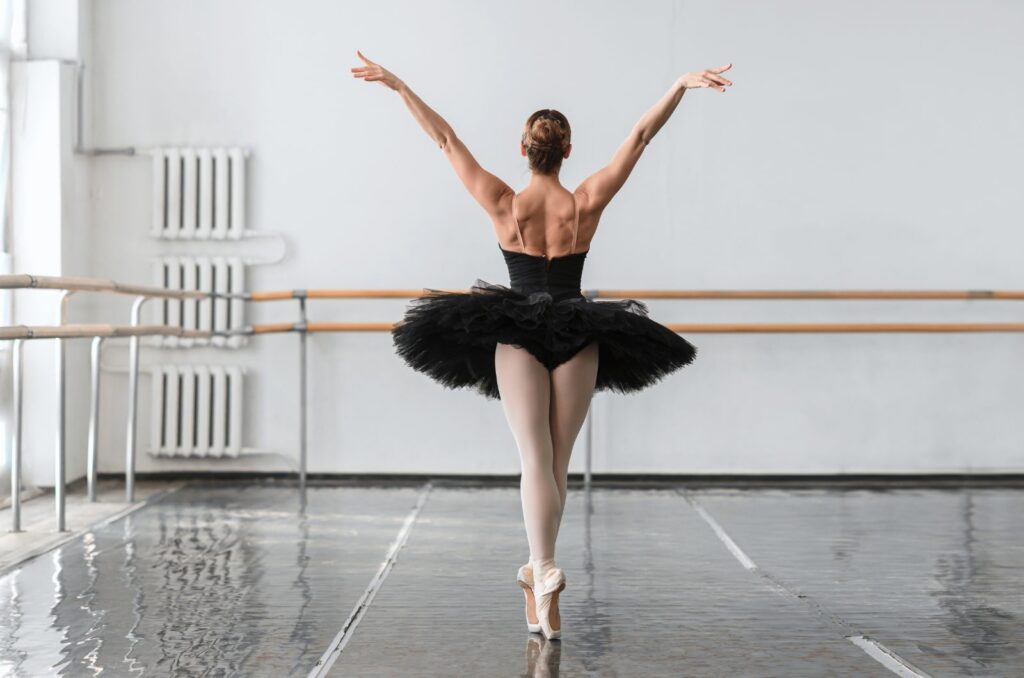
2. YOUR PoRT-DE-BRAS & ArMS ARE CRUcIAL
Arms and Extremities:
Moving further from the centre, let’s delve into the intricate details of your extremities—hands, arms, feet, head, and neck. These elements collectively frame your movement, playing a pivotal role in the aesthetics and posture of ballet.
While the nuances of arms, feet, and more could fill hours of instruction, our focus here is on the essentials that significantly impact your posture. Arms, particularly in ballet, go beyond mere limbs; we refer to them as “port de bras,” (= carrying of the arms in French). This includes the shoulder blades, shoulders, neck, and head, all interconnected with the central point of your movement—the core.
In the ballet realm, arms hold a dual significance. They contribute not only to the visual aesthetics but are crucial for turns, balance, momentum, and direction. Neglecting arms in favour of other aspects may hinder your progress. Therefore, addressing arms early on accelerates overall absorption of dance principles.
Shoulder Girdle and Shoulder Blade:
Effective arm movement necessitates understanding the shoulder blade’s role. It acts as an anchor for your “port de bras,” connecting arms to the centre. Ensuring that the shoulder blade is pulled down creates a controlled, fluid movement. The shoulder blade, a complex structure, involves various muscles. An awareness of these muscles prevents common issues like shoulder “winging.”
Artistic Touch
In the advanced stages of your ballet journey, you can introduce subtle hand movements. The relaxed yet controlled hand positioning, adds an artistic flair. While this artistic touch is nuanced, mastering the fundamentals first is essential.
As you progress in ballet, remember that arms and extremities are integral to achieving the desired posture and artistic expression. The meticulous attention to the shoulder blade, support, and hand positioning forms the basis for graceful and controlled movements. By mastering these fundamentals, you lay the groundwork for a captivating and authentic ballet experience.
In my complimentary course, ‘Ballet Posture in 5 Steps,’ you’ll discover two instructional videos dedicated to refining your arm techniques and mastering port de bras for a graceful ballet posture. These videos not only delve into the essential concepts discussed earlier, but they also include a specialised workout designed to fortify the muscles crucial for achieving optimal form. Unlock free access by clicking here.
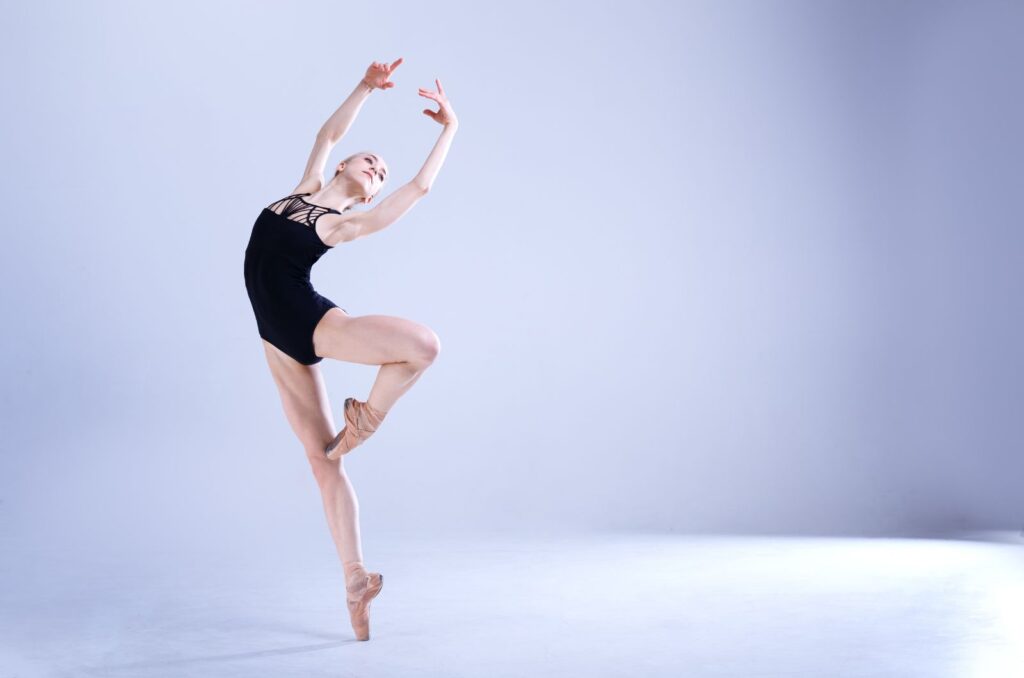
3. TUrNoUT & LEG MOVeMENT
Last but not least, the outward movement of the legs, known as turnout. Often, when talking about ballet posture, folks focus on the core without recognising or realising that the legs are as much part of the posture as anything. Ballet legs are unique because they’re always in en dehors (aka turnout).
While the concept of turning out from the hip is widely known, our collective effort will centre around strengthening the pertinent muscles for optimal turnout, fostering movement, and fluidity.
Hip Joint Structure:
To comprehend turnout’s dynamics, we must start with the pelvis, that magical link between your centre and legs. A stable pelvis is indispensable for maintaining turnout. The hip joint, a ball-and-socket joint formed by the femur, dictates the range of turnout. However, it’s crucial to grasp that bone structure varies between individuals, and the innate range cannot be altered.
Flexibility and Strength Requirements:
Achieving and retaining turnout necessitates two key elements: flexibility in the hip joint and strength in the deep six rotator muscles. The deep six muscles, situated beneath the hip region, play a pivotal role in rotating the thigh bone outward. Flexibility allows the leg to reach the full range dictated by one’s natural bone structure.
Hip Disassociation:
Given that the femur is the body’s strongest bone, mastering hip disassociation becomes imperative. This ability ensures the independent movement of the leg without compromising pelvic stability. Ballet exercises like Grandes Jetés, challenging the stability of the pelvic region while moving the leg, exemplify this disassociation.
Mistakes to avoid
Common Mistakes and Clarity:
One common mistake in the pursuit of hip flexibility is relying solely on static stretches like the butterfly position. This approach often proves inefficient and may lead to increased tightness. Smart, targeted methods are required. Moreover, over-clenching the buttocks, assuming it aids rotation, can hinder leg movement and impede the desired range.
Multiple Turnout Ranges:
Understanding that turnout varies in different positions is crucial. There are seven distinct turnout ranges depending on factors such as standing, second position, à la seconde, fondu, devant, derrière in an arabesque, and retiré. Each position influences the leg’s placement in the hip socket, contributing to diverse turnout capacities.
How TO IMProVE YOUR TuRNOUT
Identifying Restrictions:
Before delving into strengthening exercises, identifying where your restrictions lie is vital. Whether in the front, back, or another area, recognising specific limitations guides targeted workouts. If tension is noted, mobilising the hip, not aggressive stretching, is recommended to address built-up joint tension.
Individual Challenges and Back Control:
Individual challenges in maintaining turnout, such as lifting the leg to the back, often involve more than leg and hip muscles. Fine muscle control throughout the back, especially in the extension derrière, is crucial. Weakness in the back can impede the desired turnout and leg elevation.
YOUR NEXT STePS TO BETTER BaLLET POSTurE
Every dancer’s path is unique, and understanding your body’s intricacies ensures a more informed and effective approach to mastering turnout. If you’d like to learn more on this topic with a more visual representation of where turnout “lives” in your body and how to unlock it, my free mini course ‘Ballet Posture in 5 steps’ is for you. Not only you’ll find more information on the above, but as in the centre and port-de-bras sections, you’ll find a dedicated workout on discovering your potential turnout range and strengthening the muscles that hold your turnout in place.
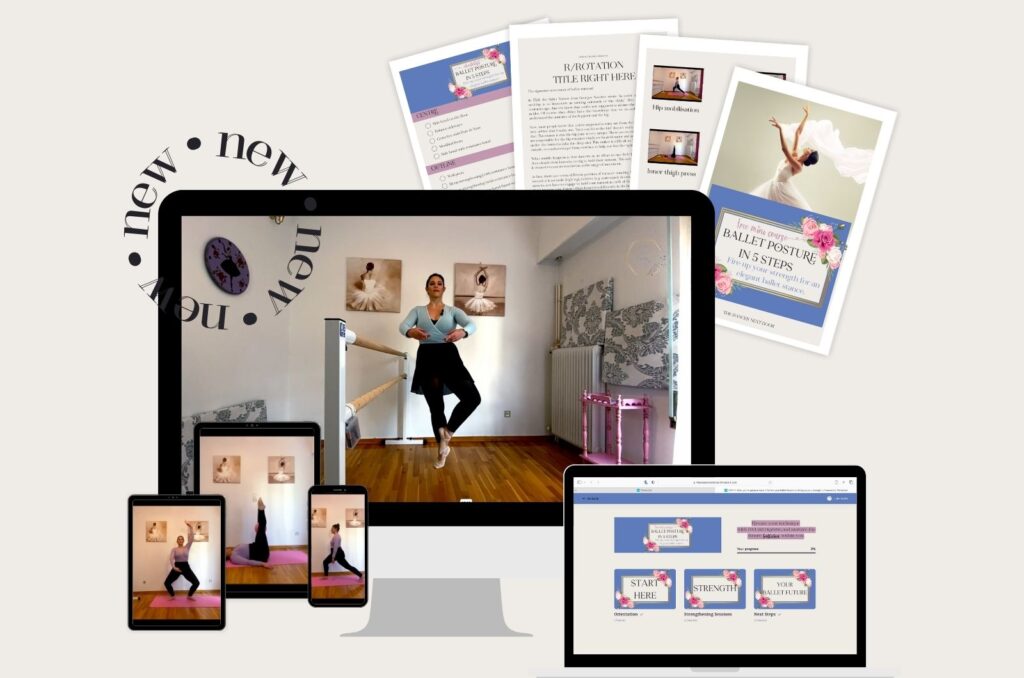
Attempting to master every nuance of ballet posture all at once might feel overwhelming. However, let this not discourage you. Ballet posture is not a destination but an ever-evolving aspect of your ballet performance, much like any other part of ballet technique.
The key lies in taking deliberate steps, following the structured progression outlined in this guide. Think of it as learning a series of dance movements—one at a time, each building upon the other. The ballet posture you seek is not a finite achievement but a resilient foundation that grows with your dedication and conscious effort.
To kickstart your personal journey and delve deeper into the intricacies of ballet posture, seize the opportunity to explore my complimentary mini-course, ‘Ballet Posture in 5 Steps.’ This comprehensive resource is designed to empower you with:
- Three in-depth videos, expanding on the insights shared in this blog post.
- Three targeted video workouts focusing on core strength, port-de-bras, and turnout.
- A ballet barre session to integrate and solidify your newfound knowledge.
- Access to downloadable resources.
➡️ Enrol in ‘Ballet Posture in 5 steps’ today for FREE and gain lifetime access.

